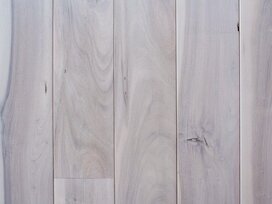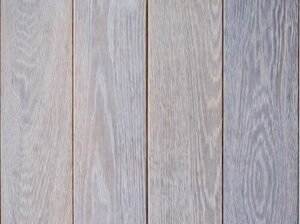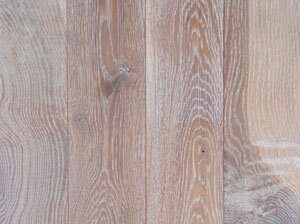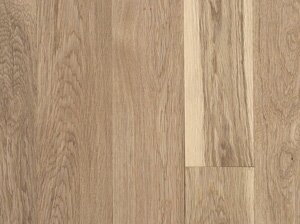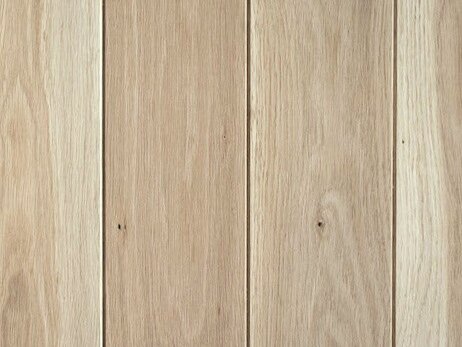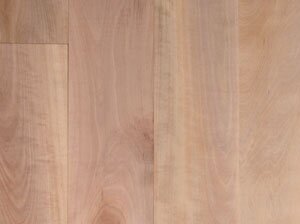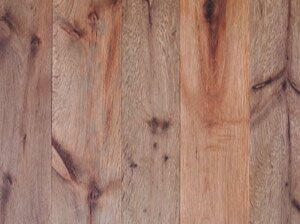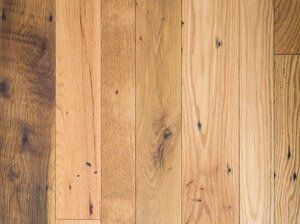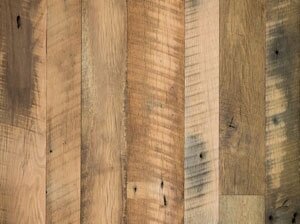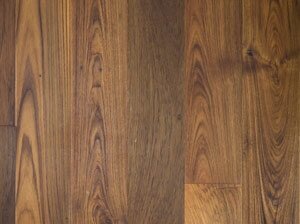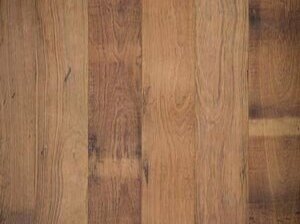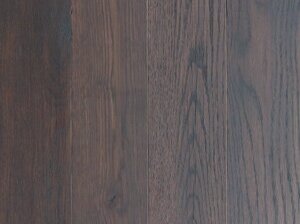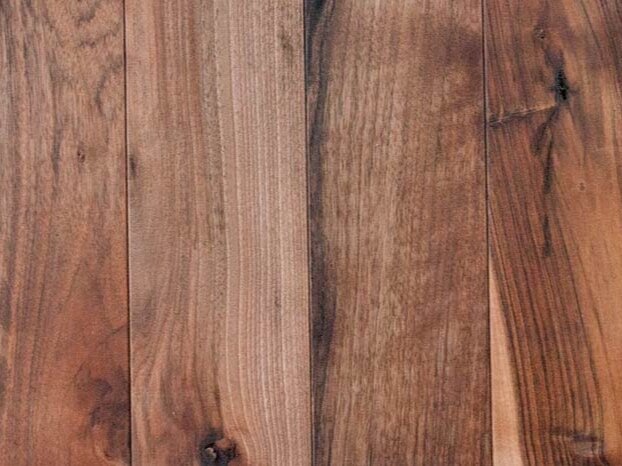Sustainable Wood Flooring for Commercial Interiors: 8 Considerations for Durability & Performance
Salvaged Left Coast White Oak brings warmth and value to the office space
When it comes to designing commercial interiors, incorporating sustainable elements has become a top priority for many designers. One impactful way to achieve this is by choosing reclaimed and FSC® (Forest Stewardship Council) certified wood. Adding reclaimed and FSC certified wood flooring into a commercial interior design adds value, ambiance and sustainability to a project while promising durability for high traffic environments. In this article, we will explore some considerations to make before choosing and installing wood flooring into a commercial interior design.
Benefits of Sustainable Wood Flooring in Commercial Designs
There are numerous benefits to installing sustainable and reclaimed wood flooring in a high-traffic, commercial interiors, including durability, performance, aesthetics, value, indoor air quality and ease of maintenance.
Wood flooring, especially engineered flooring, is known for its exceptional durability and longevity. Depending on the species, it can withstand heavy foot traffic, resist scratches, and maintain its beauty even in demanding commercial settings. By investing in durable flooring, you reduce the need for frequent replacements and minimize long-term costs.
Wood flooring can be finished with low-VOC (volatile organic compounds) coatings, which reduces off-gassing of harmful chemicals, contributing to better indoor air quality in your commercial space. Improved air quality promotes a healthier environment for employees, customers and visitors.
Wood flooring also adds timeless beauty and sophistication to any commercial interior. It offers design versatility, allowing you to create a wide range of styles, from classic to contemporary. The natural warmth and unique grain patterns of hardwood create an inviting atmosphere, enhancing the overall ambiance of your space.
The sustainability of FSC Certified wood and/or reclaimed flooring can add value to your space. When potential tenants or buyers see FSC certification, it can positively influence their perception of the space's quality and sustainability, potentially leading to higher occupancy rates or sales prices.
Wood flooring is also relatively easy to clean and maintain, making it suitable for high-traffic commercial interiors. Regular sweeping, vacuuming, and occasional damp mopping are usually sufficient to keep the floor looking its best. Hardwood's smooth surface also helps resist stains, reducing the risk of unsightly marks in busy areas.
Engineered FSC Certified reclaimed Sakhay Teak flooring at Santa Clara University provides durable and timeless wood flooring application
Choosing the Best Wood Flooring for High Traffic Commercial Environments
So what are the considerations to take into account when deciding on wood flooring for a commercial interior space? There are many aspects that will affect the type of wood flooring best suited for your application. Here is a selection of considerations for choosing the best hardwood flooring for high traffic environments:
1. Species Selection
When choosing hardwood flooring, it's essential to research and select the right species that align with your aesthetic vision and commercial needs. Consider factors such as the durability, color, grain pattern, and maintenance requirements of different wood species. Additionally, ensure that the chosen species is FSC certified or sourced responsibly, guaranteeing it comes from responsibly managed forests.
2. Maintenance & Longevity
Maintaining commercial spaces is crucial to their longevity. When selecting commercial wood flooring, consider maintenance requirements to ensure ease of cleaning and upkeep. Some wood species, such as oak or teak, are known for their low maintenance needs. Additionally, consider finishing options like commercial-grade sealants or low-VOC water-based polyurethanes that offer durability and protection against spills, scratches, and general wear.
3. Aesthetics & Functionality
While aesthetics play a significant role in commercial design, it is essential to strike a balance between look and functionality. Consider the overall design scheme of your space and choose wood flooring that complements the existing decor while ensuring it suits the practical needs of the area. For instance, lighter wood species can create an open and airy feel, while darker tones lend a more formal and sophisticated ambiance.
We offer a wide range of wood flooring options, ranging in colors and species:
4. Sustainability & Sourcing
In today's world, where environmental consciousness is at the forefront of our minds, the importance of making sustainable choices cannot be overstated. When it comes to selecting wood flooring for commercial spaces, opting for FSC certified wood can bring numerous benefits to both the environment and our overall well-being.
Opting for FSC certified wood flooring ensures that the wood products come from forests that are responsibly managed. The FSC certification guarantees that the wood is sourced from sustainably managed forests, where biodiversity is protected, and ecosystems remain intact. This means that when we choose FSC certified wood flooring, we can have peace of mind knowing that our purchase supports healthy forests and contributes to the conservation of nature.
In addition, FSC certification takes into consideration the social and economic aspects of forestry. It ensures that local communities and indigenous peoples are involved in decision-making processes, and their rights are respected. By selecting FSC certified wood flooring, we are endorsing fair trade practices that promote social equality, local employment, and the rights of workers within the forestry industry.
Look for FSC reclaimed wood, sustainably-harvested FSC new wood or salvaged wood that has been recovered from forests or other processes to promote recycling materials and thoughtful sourcing.
5. Hardness and Durability
Commercial spaces, especially those with high foot traffic, require durable flooring that can withstand constant wear and tear. Consider the level of traffic your space experiences and select a wood flooring option that can hold up to the demands.
Look for species known for their hardness and durability. For example, species like oak and teak are popular choices due to their ability to withstand heavy foot traffic and resist dents and scratches. Check the Janka hardness rating of the wood, which measures the wood's resistance to indentation, with higher ratings indicating greater hardness. Opt for wood with a higher Janka rating to ensure it can handle the demands of high-traffic areas.
Fumed European Fletcher Oak flooring at the Virgin Hotel in Las Veags
6. Engineered Flooring Options
Consider engineered wood flooring, which consists of a real wood veneer on top of a stable plywood or high-density fiberboard (HDF) core. Engineered wood flooring is more dimensionally stable than solid wood flooring, making it less prone to warping or cupping in high-moisture environments. Opt for thicker engineered wood planks with a substantial wear layer. A thicker wear layer allows for multiple sandings and refinishing over the flooring's lifespan, increasing its longevity in high-traffic areas.
7. Professional Support
Consulting with flooring professionals experienced in selecting hardwood flooring for high-traffic environments is vital for choosing the proper wood flooring selection for the desired application. They can provide valuable insights and recommend specific products based on your requirements and budget.
We are always here to help consult designers and customers with their wood flooring questions. Please reach out to us by email, phone or on our Contact page to connect.
8. Samples & Testing
Make sure to request samples of the wood flooring options you're considering and test them under simulated high-traffic conditions. Expose the samples to wear, impact, and spills to assess how well they hold up in real-life situations.
Order samples of our reclaimed and sustainable wood flooring directly from us, or from Material Bank.
Choosing the right commercial wood flooring for your design project requires a variety of considerations that affect look, longevity and performance. Remember to consider factors such as traffic levels, wood species, finish options and seek guidance from professionals in order to choose a flooring solution that works for your specific needs.




